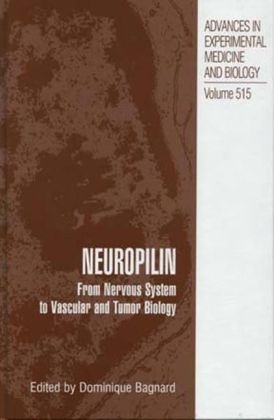Read more
This volume provides an analysis on how a single molecule is able to encode a wide range of functions in various biological systems, contributing to the disappearance of frontiers in biology. Beneficial for scientists of multiple fields, interested by the consequence of sophisticated mechanisms of signal transduction, this volume is a general model for the understanding of a multifunctional factor, a model that may apply for a variety of signals during both physiological and pathological cellular behavior.
List of contents
1: From the discovery of neuropilin to the determination of its adhesion sites; H. Fujisawa. 2: Neuropilins as semaphorin receptors: in vivo functions in neuronal cell migration and axon guidance; A. Bagri, M. Tessier-Lavigne. 3: The role of neuropilin in vascular and tumor biology; M. Klagsbrun, S. Takashima, R. Mamluk. 4: Neuropilin-1 in the immune system; P.-H. Romeo, V. Lemarchandel, R. Tordjman. 5: Structural and functional relation of neuropilins; F. Nakamura, Y. Goshima. 6: The function of neuropilin/plexin complexes; A.W. Püschel. 7: The interaction of neuropilin-1 and neuropilin-2 with tyrosine-kinase receptors for VEGF; G. Neufeld, O. Kessler, Y. Herzog. 8: The function of neuropilin / L1 complex; V. Castellani. 9: Neuropilin and its ligands in normal lung and cancer; J. Roche, H. Drabkin, E. Brambilla. 10: Neuropilin and class 3 semaphorins in nervous system regeneration; F. de Winter, A.J.G.D. Holtmaat, J. Verhaagen. Index.
Summary
Cell adhesion is one of the most important properties controlling embryonic development. Extremely precise cell-cell contacts are established according to the nature of adhesion molecules that are expressed on the cell surface. The identifica tion of several families of adhesion molecules, well conserved throughout evolu tion, has been the basis of a considerable amount of work over the past 20 years that contributed to establish functions of cell adhesion in almost all organs. Nowadays, cell adhesion molecules are not just considered as cellular glue but are thought to play critical roles in cell signaling. Their ability to influence cell proliferation, mi gration, or differentiation depends on both cell surface adhesion properties and acti vation of intracellular pathways. The next challenge will be to understand how these molecules interact with each other to ensure specific functions in the morphogen esis of very sophisticated systems. Indeed, by exploring the cellular and molecular mechanisms of nervous system development, the group of H. Fujisawa in Japan identified in 1987 an adhesion molecule, neuropilin, highly expressed in the neuro pile of amphibian optic tectum. Ten years later, two groups discovered that neuropilin is a receptor for guidance signals of the semaphorin family. Axon guidance is a critical step during brain development and the mechanisms ensuring growth cone navigation are beginning to be well understood. The semaphorins are bifunctional signals defining permissive or inhibitory pathways sensed by the growth cone.

